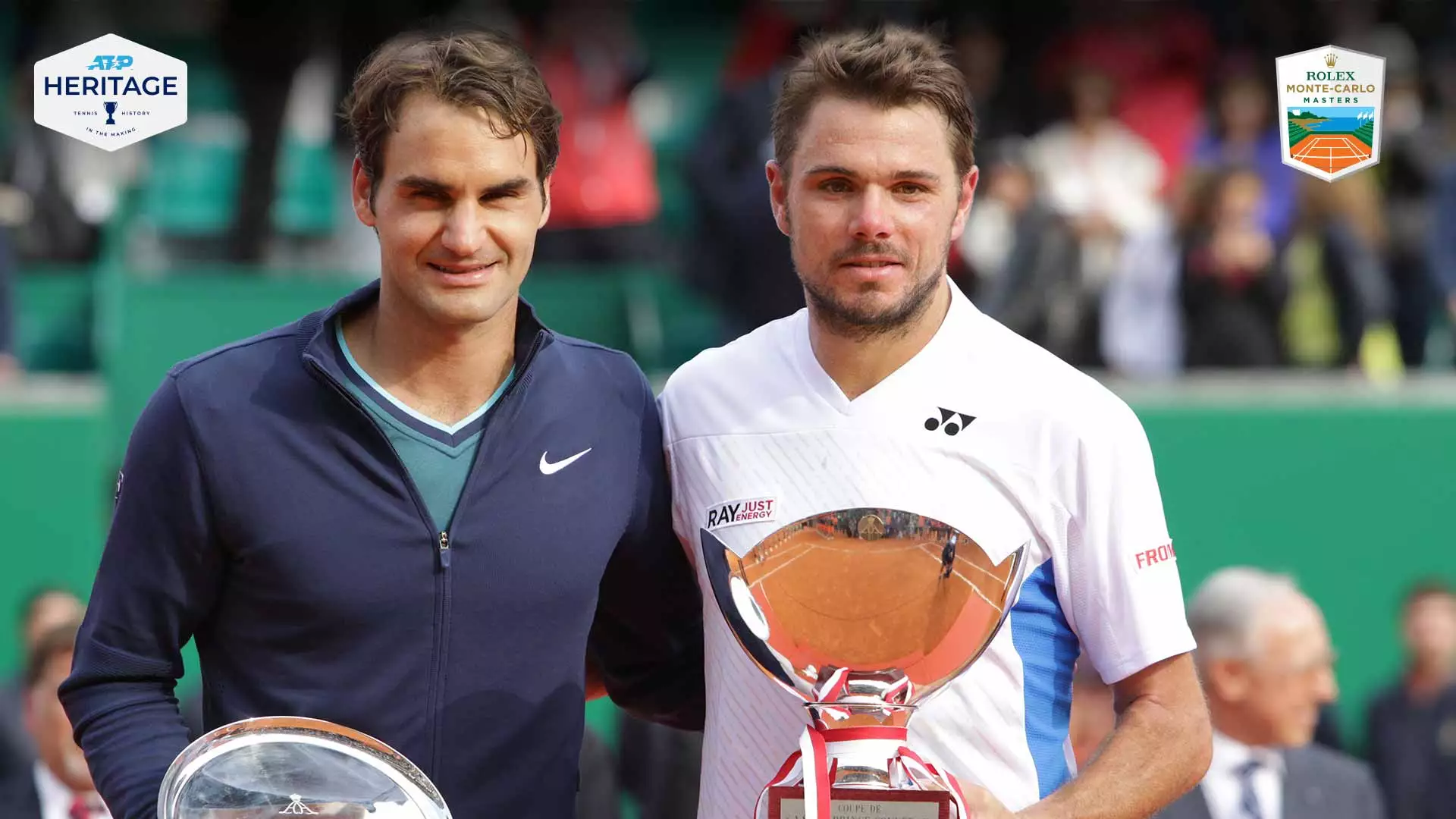Australian Open champion snapped 11-match losing streak against countryman
In his first ATP Tour championship match at the 2000 Open 13 Provence in Marseille, Roger Federer fell in a final-set tie-break to countryman Marc Rosset. By the time the next all-Swiss final was contested on the ATP Tour, Swiss tennis would find itself in an unrecognisable landscape.
It took more than 14 years to reach that moment at the 2014 Rolex Monte-Carlo Masters, when 78-time tour-level titlist Federer faced Australian Open champion Stan Wawrinka for the trophy. World No. 3 Wawrinka, who had recently overtaken his rival as Swiss No. 1, and World No. 4 Federer were meeting for the 15th time in their ATP Head2Head series (Federer led 13-1).
Wawrinka entered the contest in the best form of his career, seeking his third title of 2014 (Chennai, Australian Open) after a 19-3 start to the year. On the opposite side of the net, Federer was aiming to lift an elusive first Monte Carlo trophy, having finished as runner-up to Rafael Nadal on three consecutive visits to the Principality from 2006 to 2008.
Federer claimed the opening set with a single break of serve to move one set away from a 12th straight victory against his gold medal-winning 2008 Beijing Olympics doubles partner. But, in 2014, Wawrinka had made a habit of ending long-standing losing streaks against the biggest stars on the ATP Tour. At the Australian Open, the 29-year-old ended 14 and 12-match losing streaks against Novak Djokovic and Nadal, respectively, en route to the trophy.
Wawrinka held his nerve in a tightly contested second set, moving up the court to finish points in a must-win tie-break to force the match to a third set. Riding his momentum into the decider, Wawrinka took time away from Federer with powerful groundstrokes to establish a 4-0 advantage. From there, the Australian Open titlist comfortably held his next two service games to claim his maiden Masters 1000 trophy.
“It’s always special to play Roger,” said Wawrinka. “We know it’s always a strange match, especially being in the final here. He’s my best friend on the Tour. We respect each other so much. I’m just trying on the court to win the match. Before and after, we are still very good friends. During the match, we just try everything to win. Today, I’m really happy to take that one.”
It was Wawrinka’s second ATP Head2Head triumph against Federer, adding to his 2009 victory at the same event. By lifting the trophy, Wawrinka became only the third man to clinch a Masters 1000 crown outside the ‘Big Four’ of Nadal, Djokovic, Federer and Andy Murray since the 2010 edition of the tournament. Rolex Paris Masters champions Robin Soderling (2010) and David Ferrer (2012) were the only other men to achieve the feat during that period.
“Of course, I’m very happy for Stan,” said Federer. “It’s a huge win for him after winning his first Grand Slam this year, also to win his first Masters 1000. To take the opportunities when they’re there, that’s key in a tennis player’s career. So I’m very happy for him.”
Wawrinka’s sixth Top 10 victory of the year (6-0) catapulted him to No. 1 in the ATP Race To London. The newly-crowned Australian Open winner went on to qualify for the Nitto ATP Finals, making his second of four straight appearances at The O2 from 2013 to 2016, before falling to Federer in the semi-finals. The semi-final encounter was later named ATPTour.com’s Match of the Year.
